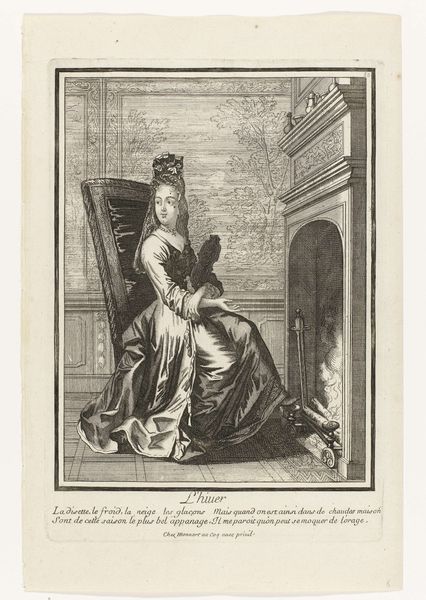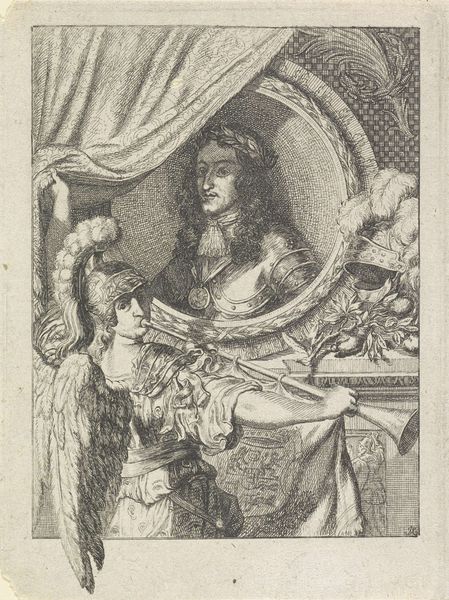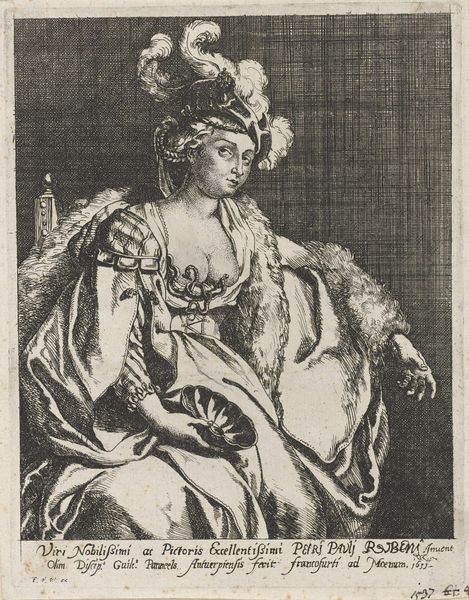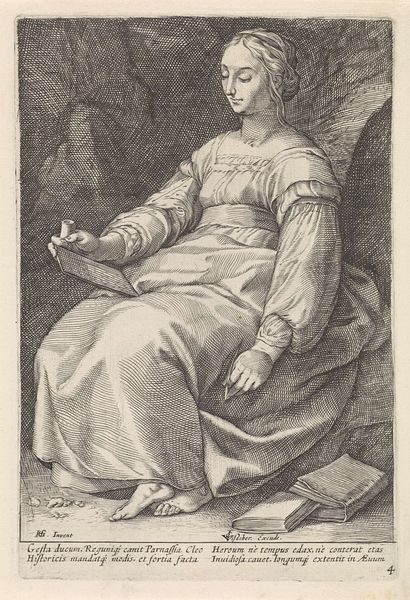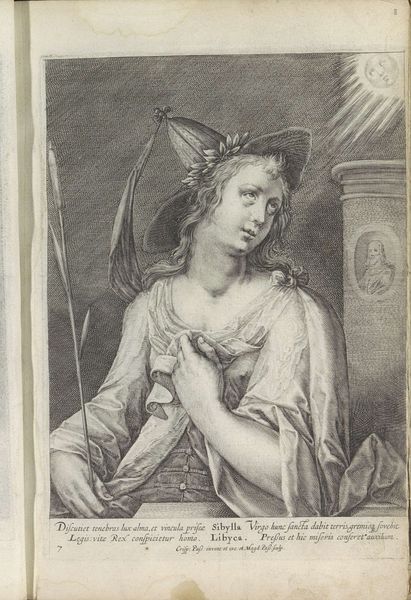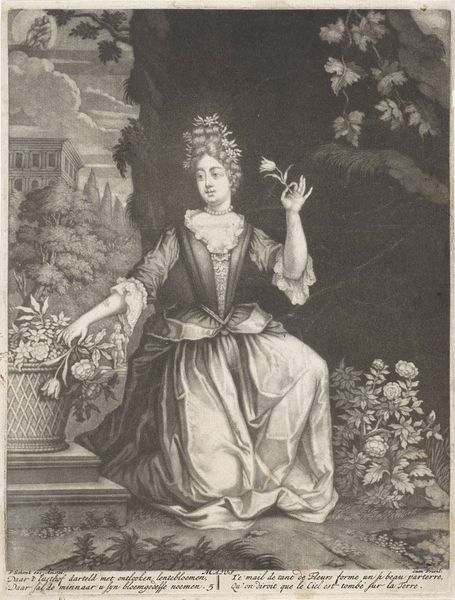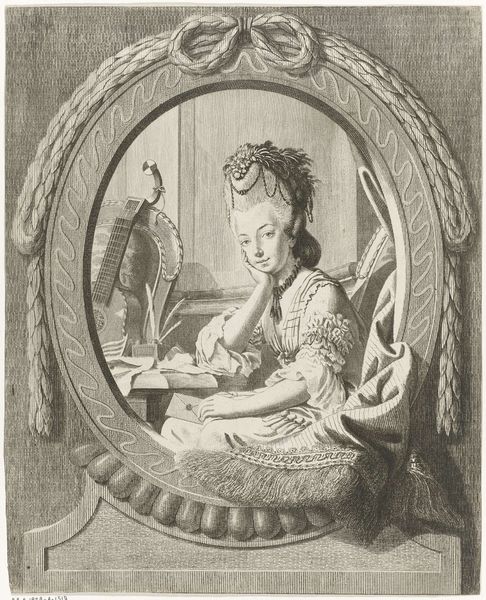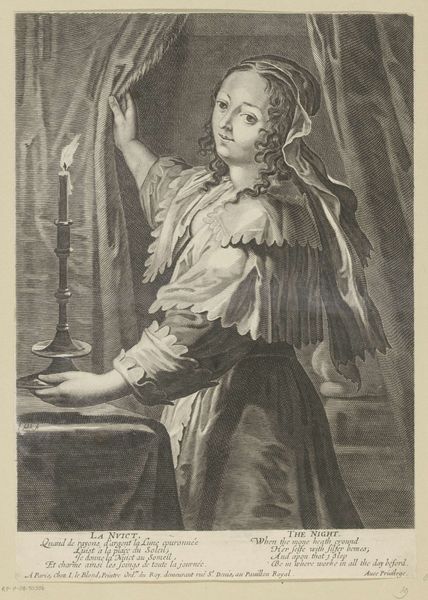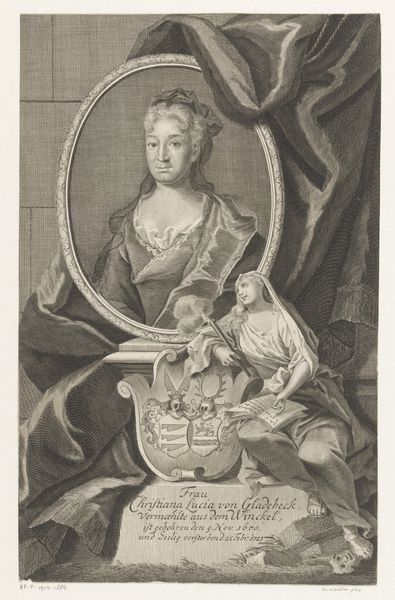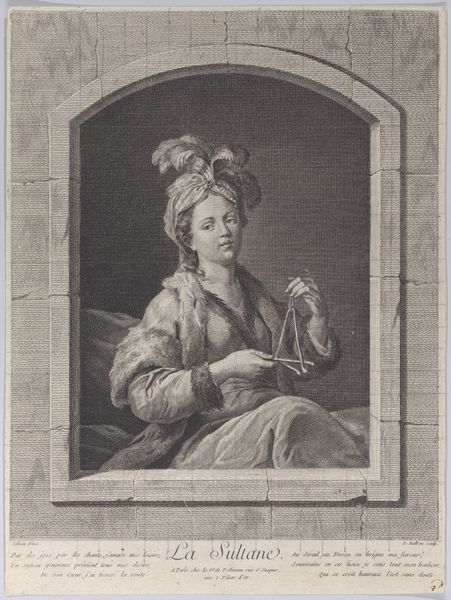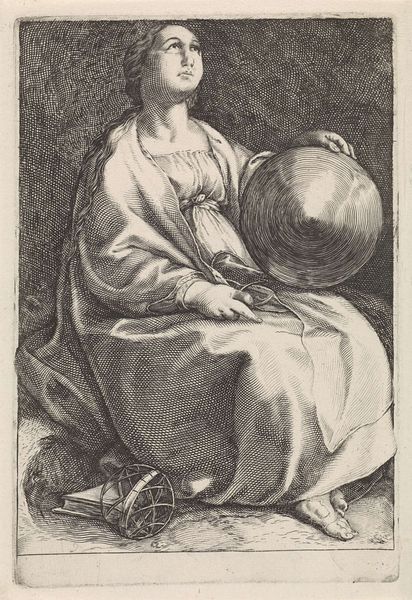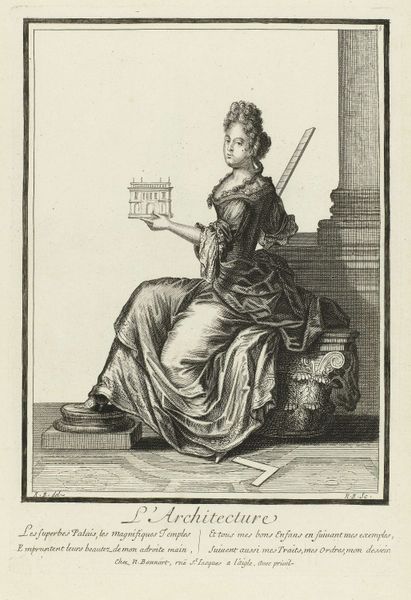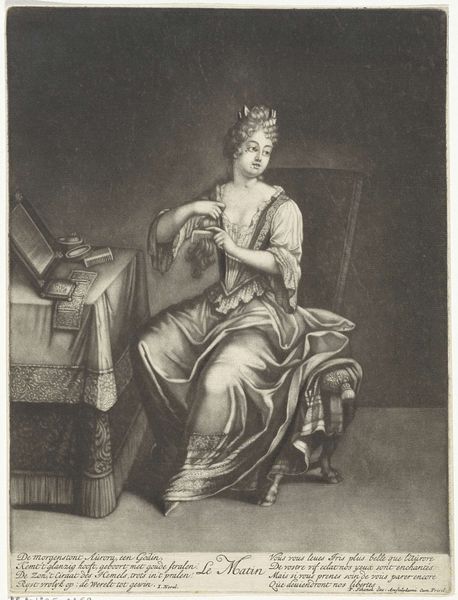
print, engraving
#
portrait
#
baroque
# print
#
figuration
#
line
#
history-painting
#
engraving
Dimensions: height 322 mm, width 220 mm
Copyright: Rijks Museum: Open Domain
Editor: This is "Sibille van Erythrae," an engraving by Crispijn van de Passe II, dating back to 1615. The intricate lines create a sense of depth, almost making the figure seem to emerge from the page. I’m curious about the inclusion of the lamb. How do you interpret this work? Curator: Well, let’s consider the material reality of its production. Engravings like this one weren't just aesthetic objects. They were commodities, produced within a workshop system, reflecting and reinforcing social hierarchies and religious beliefs. Think about the labor involved in creating these precise lines, and how that labor was valued – or devalued – within the context of early 17th-century Europe. Editor: So, you're focusing on the means of production rather than simply the symbolic meaning of the Sibyl or the religious imagery? Curator: Exactly. The depiction of the Sibyl herself – her dress, her gaze – and the inclusion of the lamb all contribute to a message that was carefully crafted for a specific audience and market. Even the type of ink and paper chosen contribute to the meaning being conveyed. Who was meant to consume this image and what impact would this image have on the population? How does the print medium allow this art piece to spread? Editor: That’s a fascinating perspective. It’s made me consider how the printmaking process itself shapes the meaning and value of the artwork. Curator: And think about the social context! This was a time of religious upheaval and exploration. Images played a crucial role in disseminating information and shaping public opinion. These engravings offer a lens through which to view the cultural anxieties and aspirations of the time. Editor: I never thought about engravings in such a practical and material way before. It really highlights the connection between art and the broader socio-economic environment. Curator: Indeed! By focusing on materials and means, we expose the hidden networks of labor, trade, and belief that are always embedded within works of art.
Comments
No comments
Be the first to comment and join the conversation on the ultimate creative platform.

